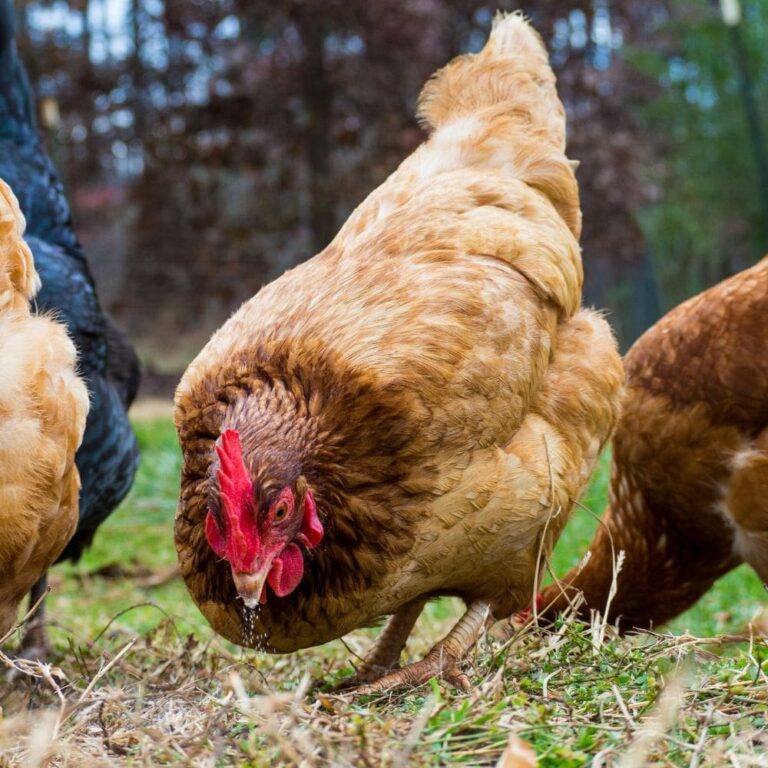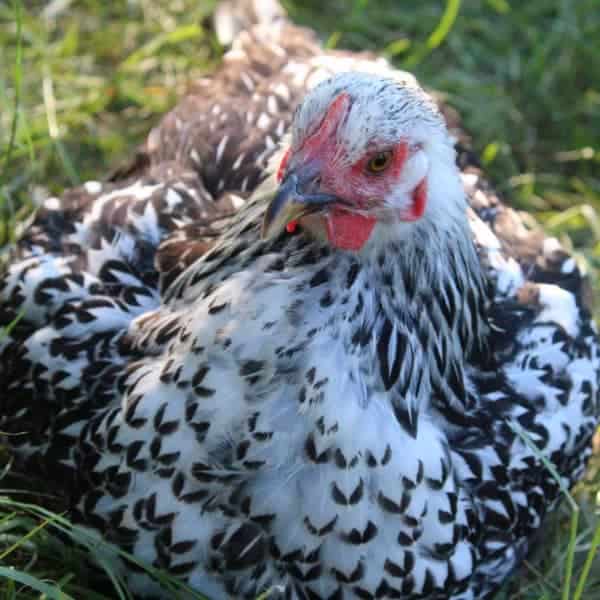Not all chicken breeds are named so clearly as the Swedish Flower Hen. It doesn’t take much imagination to figure out that this hen comes from Sweden and has plumage with the appearance of a beautiful flower.
But that’s not all there is to know about this lovely breed. Keep reading to learn about this ornamental, yet practical feathered friend.
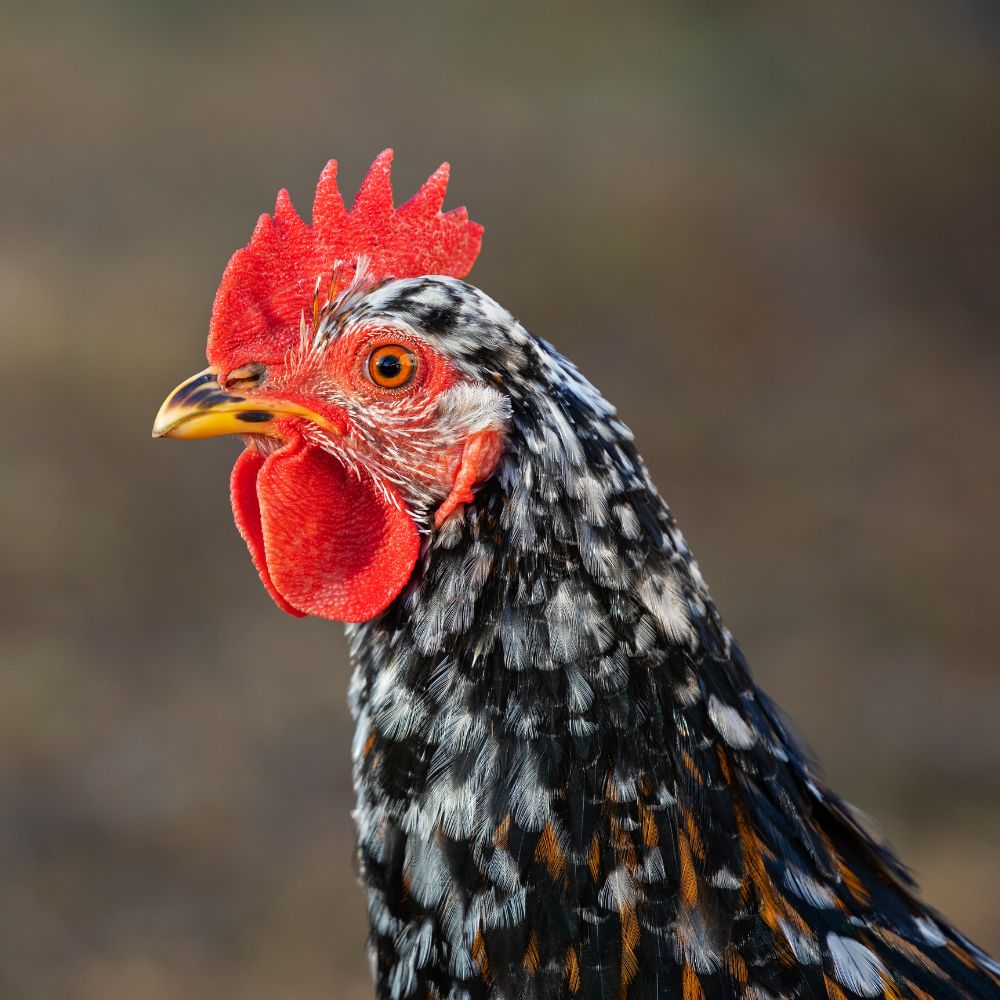
Table of Contents (Quickly Jump To Information)
History of the Swedish Flower Hen
We don’t know much about the history of this breed, but we do know it’s considered to be a landrace chicken. “A what?,” you say!?!
A landrace chicken is a breed that developed over time by natural selection, and not that of breeders guiding every step of the “trait” path. You may not have heard of the Swedish Flower Hen, but you’ve possibly heard of an Egyptian Fayoumi or a Sumatra — both of those are landrace birds too!
It may be folklore, or it may be true, but the story goes, this breed originated from the earliest settlers arriving in Sweden. After that, the environment, weather, the weak versus the strong, and other natural factors led the way for the breed we now know and admire.
Even in Sweden, however, the commercialization of chickens changed the landscape of heritage and landrace chickens. Swedish Flower Hens were no different. Around 1970 they were almost a breed in the past and would have been if not for some select breeding groups designing a breeding plan. By 2010 it was decided to send 15 Swedish Flower Hens to the USA.
And the rest is history.
Swedish Flower Hen Appearance
At first glance, the primary type of Swedish Flower Hens looks an awful lot like a Speckled Sussex. In fact, unless you are a chicken expert it might be pretty darn hard to find the differences.
Regardless, they are beautiful. Their plumage is in the pattern of “thousand flowers” (hence the name). This pattern is also known in the chicken world as the “millefleur pattern.” This breed is not to be confused with the well-known breed called Mille Fleur d’Uccle bantams, but they do have the same pattern of feathers.
They come in a large variety of colors such as orange and brown, black and white, and white and red. There is also a snow leopard variety that has black tips on the ends of feathers, it is especially rare (a rare version of the already rare bird). All of them have the flower pattern for which they are known.
The speckles all over their feathers are what give them the appearance of “flowers.” It’s unique and special and there isn’t a chicken-loving soul on earth who wouldn’t admire them.
This breed has orange eyes, red wattles, and combs (single comb), and they can be tasseled, crested, or un-crested 😉. They are round, medium-sized, fluff balls.
Roosters weigh in at about 8 pounds and hen are 5.5 lbs, on average.
Temperament of the Swedish Flower Hen
According to those in the know, these beauties are equally as friendly as they are pretty. They are calm, cool, and collected (which is counterintuitive considering they are landrace chickens). Even the roosters are known for being friendly fellas, not aggressive. But they make up for their non-aggressive roo behavior with a very loud crow! So be ready for your alarm clock.
Indeed, they are incredibly mild tempered which makes them a very appealing family chicken. They seem to crave human interaction and will be your best friend (especially if lured by treats like these).
They are very smart and aware of their surroundings (which can be life-saving for chickens).
Egg Production of the Swedish Flower Hen
They aren’t the best, but they aren’t the worst either. These girlies lay approximately 150 to 200 eggs per year which is a decent amount of eggs. The egg color is light brown/beige.
Their eggs start out smaller and get larger and larger as time goes on. Some even lay extra-large eggs.
Be sure they have enough calcium to make their shells strong, otherwise, the shells can break easily and the chickens might start feasting on their own eggs😬. One great way to make sure they get enough calcium is to provide them with something like these Herbal Oyster Shells, especially if they aren’t free-ranging birds.
Are Swedish Flower Hens Hardy?
An emphatic yes! Due to the fact that they are landrace chickens that developed in a Swedish climate — they are most certainly hardy. This strain, at least in the development stage, made it through a series of environmental tests and trials and came out on top!
They do well in colder climates due to the fact that come from Sweden, this is a big bonus.
According to Greenfire Farms, a farm dedicated to hatching, raising, and selling the world’s rarest chickens, the Swedish Flower Hen is ultra-hardy.
Our experience is that they are also unusually hardy, rarely falling ill or acting dumpy. Swedish flower hens display a level of vigor and mastery of their environment that other breeds –and quite a few people– would do well to emulate.
Greenefire Farms
That was a quote I just couldn’t pass up, quite clever 😄.
Do Swedish Flower Hens Need To Free Range?
They certainly LOVE to free range. Most chickens do because they can naturally hunt and peck for bugs and grass and other things. It makes their eggs better too.
However, not everyone has a suitable free-range situation or the desire to free-range. If that’s the case, you can keep this breed in confinement but you need to be sure of a couple of things:
- Be sure they have at least 4 square feet of space per bird.
- Provide them with a nice fenced run so they can run and play and get sunshine.
- Give them some chicken toys to keep them busy.
- Supplement their feed with nutritious treats so they are sure to get plenty of protein and vitamins that are necessary to be healthy. Take a look at my favorite treats, the ingredients are out of this world. I’m pretty sure my free-range chickens like these treats better than the bugs they find on their own!
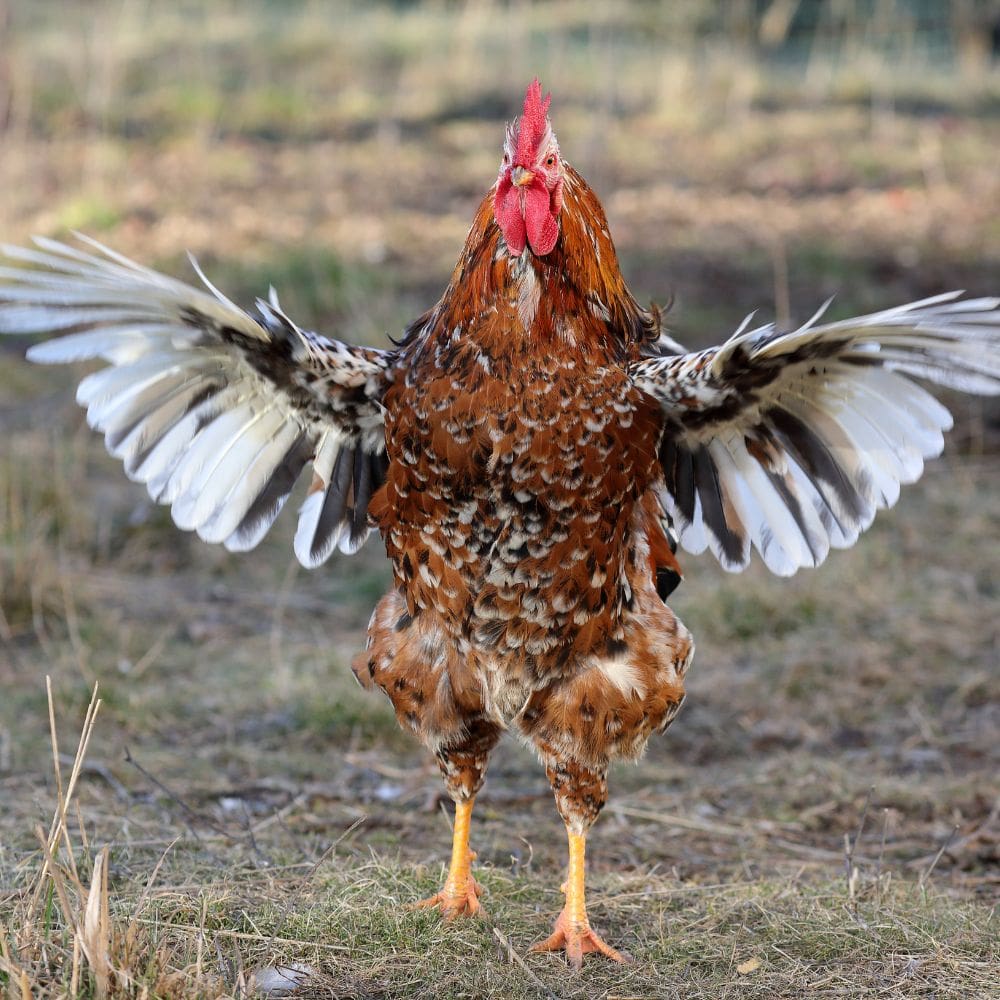
How Noisy Are Swedish Flower Chickens?
They may not be aggressive, but they are very talkative. The hens will chat it up most of the day and the roosters are proud of their crow. That probably makes this breed more of a rural, farm chicken…more so than a city chick.
That depends on your layout, your neighborhood, and how much you like (or dislike) your neighbors.
How To Care For Swedish Flower Chickens
- They may be aware and wise, but even the wisest chickens need a predator-safe dwelling to roost at night. So these beauties need a good predator-proof coop. Check out these.
- All chickens need clean, fresh water at all times. In the winter you might consider pampering them with warm water, it will help encourage egg-laying too!
- Feed your feathered friends a high-quality feed. Remember, chickens are people too. 😉The feed I recommend has a whole lot more nutritious goodies than your average farm feed. Your chickens deserve it, and it will likely prolong their lives, we are all affected by what we eat after all.
- Swedish Flower chickens are very hardy and not prone to health concerns, but you should always keep your eye on your chickens so you can detect when something isn’t right. If you catch things like lice, mites, and other nasty parasites early, it will be much easier to treat them. You can reduce the load of these kinds of pests with things like specially formulated nesting herbs and dust baths.
Summary
If you are looking for a unique chicken to add to your flock and you want a breed that is super hardy, yet loves human company — then an ornamental, yet practical Swedish Flower Hen might be your pick. Plus, she’ll pay you in eggs! It’s a win-win arrangement.
Where To Buy Swedish Flower Hens
Here are a few specialty farms/breeders that you might want to look into:
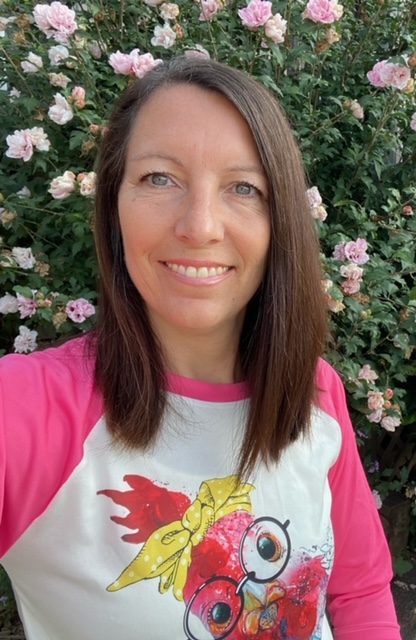
A happy wife, mother, teacher, writer, hobby farmer, lover of chickens, and contributor to Pampered Chicken Mama!

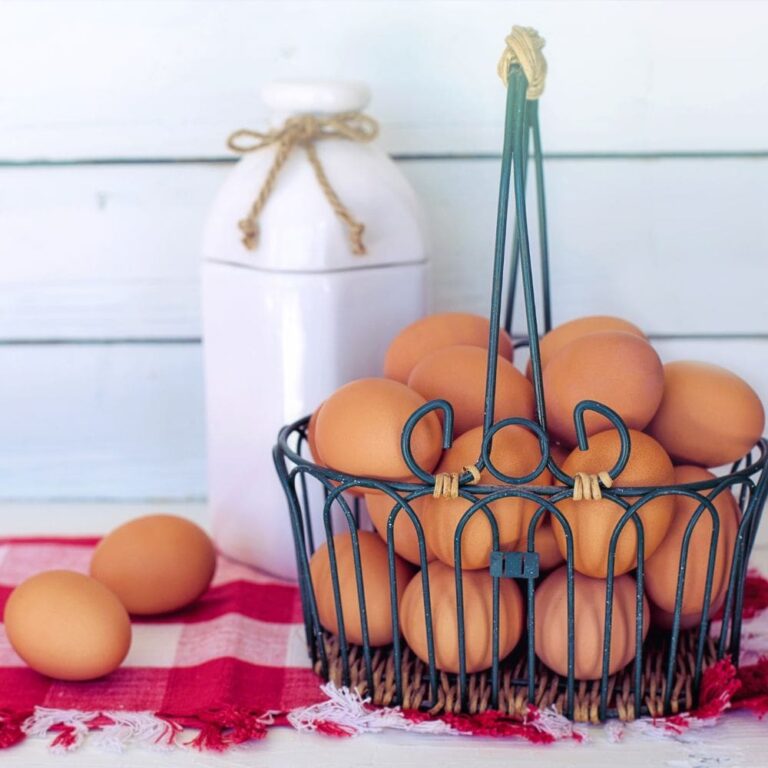
![3 Shockingly Common Myths About Feeding Chickens That Prevent YOU From Being Healthier [Podcast]](https://thefrugalchicken.com/wp-content/uploads/2016/06/common-misconceptions-about-feeding-chickens-feature-min.jpg)
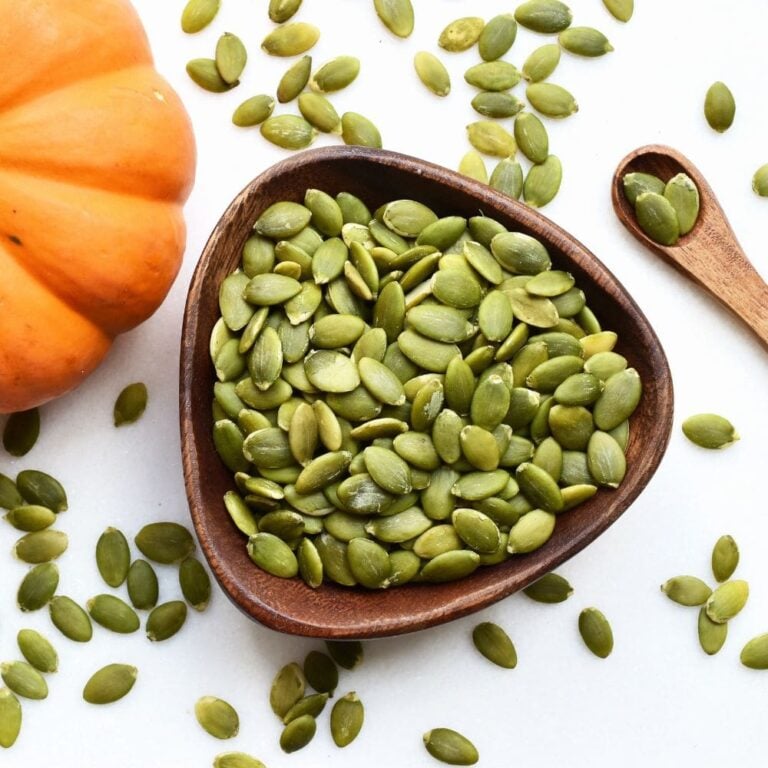
![Raising Quail Is For Every Homestead [Video Tutorial]](https://thefrugalchicken.com/wp-content/uploads/2015/12/raising-quail-for-eggs-feature-min.jpg)
